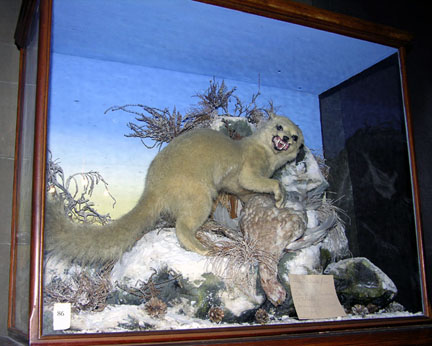
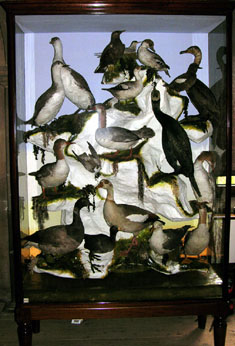
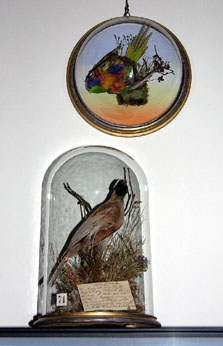
Natural science conservation and advisory work undertaken by Simon Moore in 2005
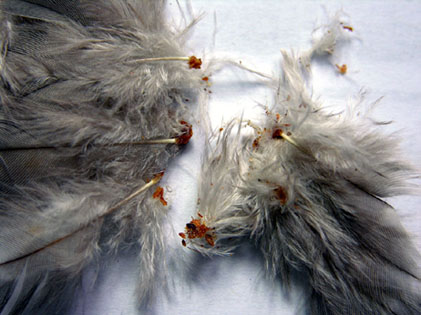 A survey was undertaken at English Heritage’s Audley End House where there are two
corridors consisting mostly of cased birds from around the world (many mounted
by F. Butt). A few birds required treatment and were found to have subcutaneous
fat ‘burn’ where the fat oxidises over time and corrodes the skin, leading to
feather drop. This was often caused by the hasty mounting of a large order
within a tight schedule.
A survey was undertaken at English Heritage’s Audley End House where there are two
corridors consisting mostly of cased birds from around the world (many mounted
by F. Butt). A few birds required treatment and were found to have subcutaneous
fat ‘burn’ where the fat oxidises over time and corrodes the skin, leading to
feather drop. This was often caused by the hasty mounting of a large order
within a tight schedule.



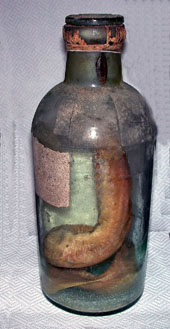
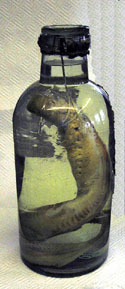 A 19th century hagfish specimen from Penlee House Museum in
Penzance was conserved. Barely preserved in water that had once been alcohol
(almost entirely evaporated) the fish had become infested with fungus which had
dissolved away much of the outer skin and it had become exceedingly fragile. The
specimen was carefully cleaned and conserved.
A 19th century hagfish specimen from Penlee House Museum in
Penzance was conserved. Barely preserved in water that had once been alcohol
(almost entirely evaporated) the fish had become infested with fungus which had
dissolved away much of the outer skin and it had become exceedingly fragile. The
specimen was carefully cleaned and conserved.
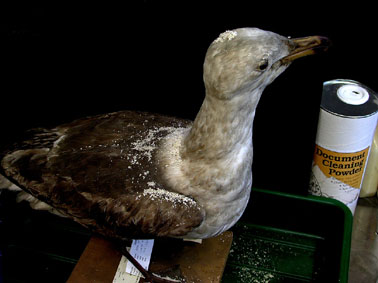
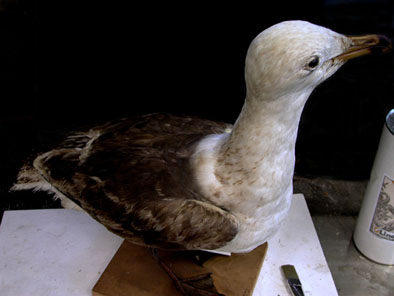 A new and effective method
for cleaning white bird feathers was discovered this year and a paper written
(Moore, S J: Cleaning dusty feathers – a technique that works. NatSCA News, 4:
32-33).
A new and effective method
for cleaning white bird feathers was discovered this year and a paper written
(Moore, S J: Cleaning dusty feathers – a technique that works. NatSCA News, 4:
32-33).
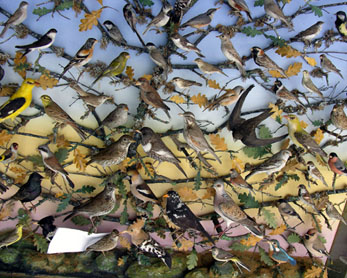 From the private sector, a large case of
British birds was conserved following ingress of the varied carpet beetle into
the display and affecting about 10% of the mounted specimens.
From the private sector, a large case of
British birds was conserved following ingress of the varied carpet beetle into
the display and affecting about 10% of the mounted specimens.
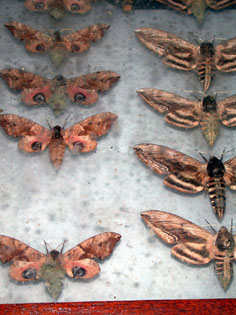
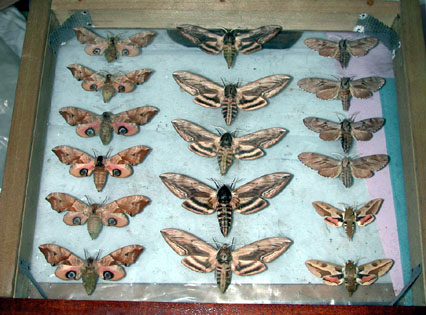 Another collector brought in some moths, severely affected by mould. These were cleaned
using alcohol swabs.
Another collector brought in some moths, severely affected by mould. These were cleaned
using alcohol swabs.
On the Preventive Conservation side, it was found that fluorescent light fittings should be checked periodically since insects, including pests, are attracted to them. A few live pests were found in a few such fittings!
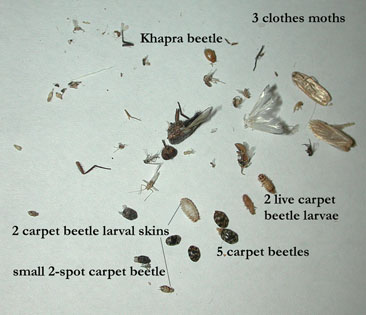
For more details about what we can do for you, or for a quote, please
contact:
enquiries@natural-history-conservation.com
We
are members of the United Kingdom Institute for Conservation of Historic and
Artistic Works